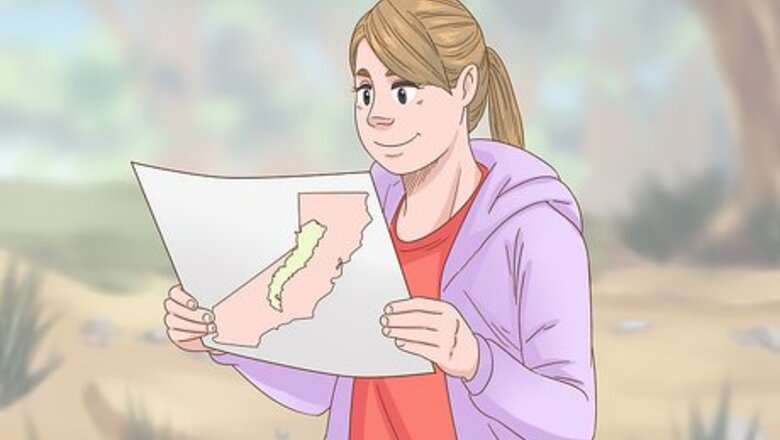
views
Finding Redwood Habitats
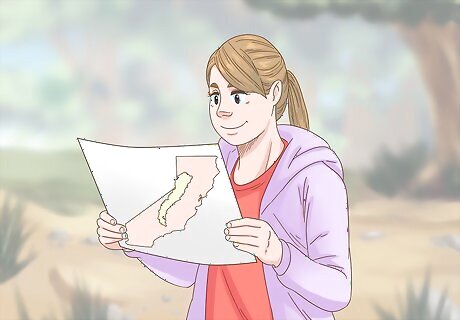
Find your location on a map to identify which redwoods are common to that area. Redwoods do not grow everywhere, so make sure to look only in the areas where they are found. Giant Redwoods were first discovered in the Sierra Nevada mountain range and can be found in National Parks throughout California. Coast Redwoods are the tallest redwoods and are only found along the California coastline. Dawn Redwoods are primarily located in remote areas of China.
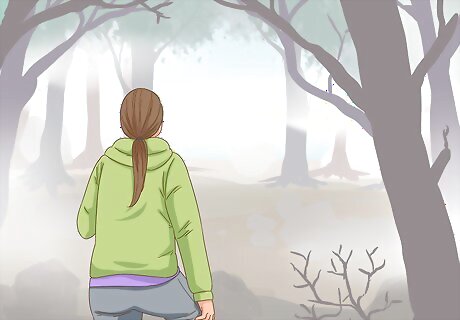
Look near areas that get a lot of rain or have a moist environment. Redwoods need near constant water and moisture to grow. A foggy summer is also good for Redwoods. It protects them from severe sunlight and keeps the tree moist.

Look up nearby Redwoods. Redwoods live for a long time, so you can likely find places where the trees grow easily. Ask your local park service about nearby Redwoods. They can point you to places where Redwoods grow. Find Redwoods online. Redwoods are protected trees in many areas since they are so old. You can easily find where they may be located on the Internet.
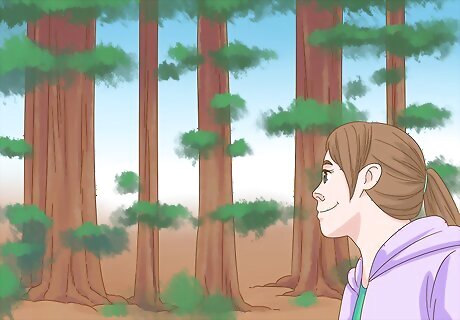
Look for the tallest trees. Redwoods are famously tall trees; some grow as tall as a football field is long. Other trees, such as the Douglas fir or the Mountain Ash, can also grow very tall. The other distinguishing features of the Redwood should allow you tell to the difference between these other trees and Redwoods.
Identifying the Trunk and Bark of Redwoods
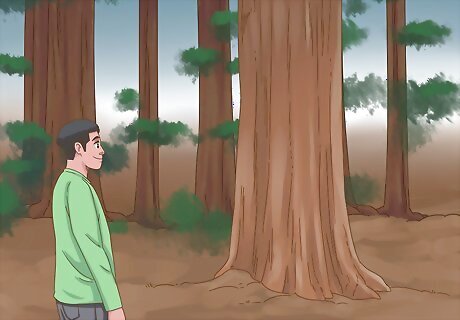
Look at the tree from afar to notice its trunk shape. It should have a cone-like shape to the trunk if it is a Giant Redwood. In contrast, the Coast Redwood is taller and leaner, with a straight trunk. Giant Redwoods have a very stout trunk that grows in a column. The base usually has a lot of tapering. Coast Redwoods have a base the same thickness as the trunk, rather than the conical shape of the Giant Redwood. Dawn Redwoods have a generally straight trunk that tapers quickly as it grows taller.
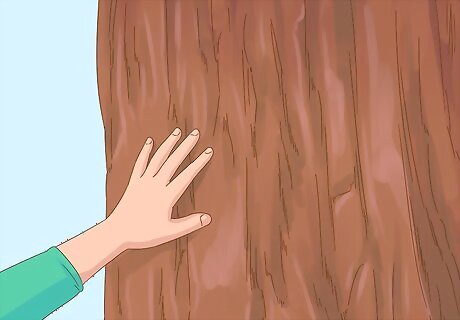
Inspect the bark for thickness and flakiness. The bark of the redwood tree is relatively thick; up to 2 feet (0.61 m) thick in mature trees. The thick bark protects the tree from fire and insect infestation. Bark on a Giant Redwood is usually more spongy to the touch, while the bark of a Coast Redwood is fibrous. Dawn redwoods also have spongy bark that is generally fluted as well. Fluted bark has many ridges that cover the outside of the tree bark.
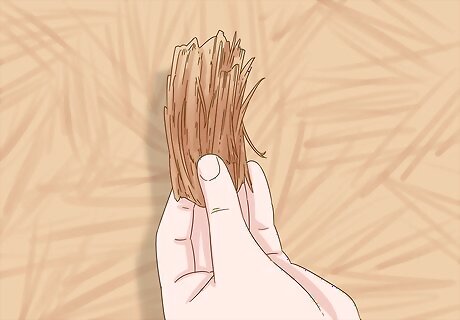
Pull off a piece of the bark. On redwood trees, the outer bark pulls away easily to reveal a soft, fibrous bark underneath the surface.
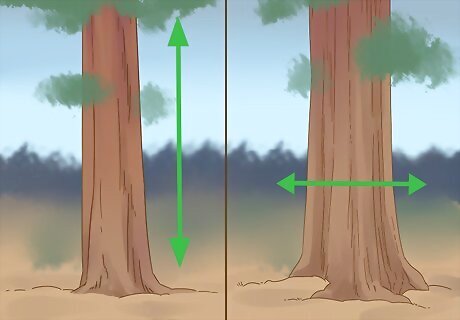
Pay attention to the size of the tree. Size is the most prominent feature of all redwoods, which are all quite large. Coast Redwoods are the tallest redwood and can grow as high as 400 feet (120 m). However, these trees are relatively thin. The Giant Redwood is thicker in girth, but not quite as tall, growing up to around 300 feet (91 m) when it is fully mature.
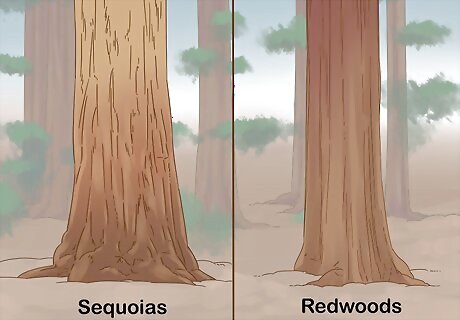
Know the difference between giant sequoias and redwoods. Sequoia trees are often confused for redwoods because of their similar height and habitat. Sequoias, however, have thicker trunks and coarser bark than redwoods, which have a slender trunk. The cones and seeds of Sequoias are 3 times larger than those of redwoods. Look at the color of the bark. Sequoias have a bright reddish-brown bark while redwoods have a dull chocolate brown.
Identifying the Leaves and Cones of Redwoods
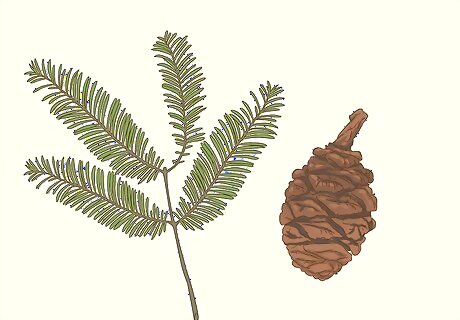
Examine the leaves and cones of a Giant Redwood. A giant redwood has unique leaves and cones. In particular, its small cones are an excellent way to identify a Giant Redwood. The leaves of a Giant Redwood are broad and long. This allows them to breathe in air the most easily. The leaves look much like needles, but they are not as sharp as other evergreen trees. Be careful not to confuse the leaves of a Japanese cedar with that of a Giant Redwood. Though their leaves are similar, the cedar has a more tangled appearance in its leaf structure than the Giant Redwood. Cones of a giant redwood are relatively small, especially considering its rather large size. Often, they will fit in the palm of your hand and are about the size of a golf ball.
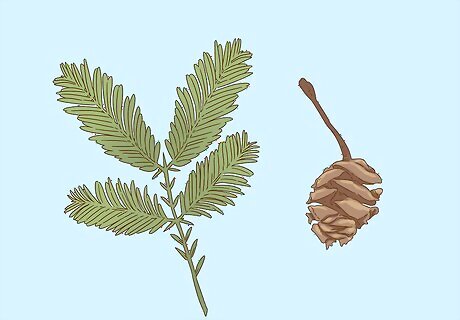
Identify the leaves and cones of a Dawn Redwood. Dawn Redwoods can occasionally have different color leaves, especially during the fall and winter. Its cones are also rather small and usually only common in places with warmer summers. The leaves of a Dawn Redwood are flattened and relatively fine. They are generally symmetrical and have opposing needle-like structures. These leaves also change color in the fall and winter. In contrast, the leaves for other species of redwood are evergreen. Dawn Redwood leaves will be an orange and yellow color when they are changing. The Larch or Swamp Cypress can often be confused for the Dawn Redwood. However, Dawn Redwood have each leaf connected to the same spot of the stem, whereas these other trees have leaves with alternate arrangement. Cones of a Dawn Redwood are spiky and produce 16-28 scales in four rows. These tree can also have male and female cones. Since cones are generally female, the male cones look more like green pearls. A Dawn Redwood is a deciduous tree, which means its leaves do change color. It is the only redwood species whose leaves do so.
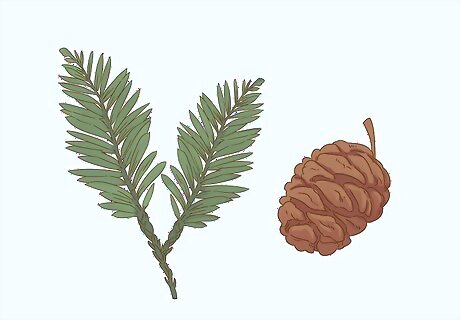
Inspect the leaves and cones of a Coast Redwood. Since the Coast Redwoods are so tall, they grow two different type of needles. While you can spot the highest type on the ground, you’ll most likely be able to examine only the lower needles. Additionally, their small cones form a unique spiral pattern that’s easy to identify. The highest leaves of a Coast Redwood have tight spikes. These spikes help them to conserve water, since there's not a lot of surface to allow for evaporation. Lower leaves of a Coast Redwood have mostly flat needles. These leaves are arranged in a similar pattern of leaf connection as the Dawn Redwood, where the leaves connect to the same spot of the stem. Cones from a Coast Redwood come out in the fall and are about one inch long. The scales have a spiral pattern around the cone.



















Comments
0 comment